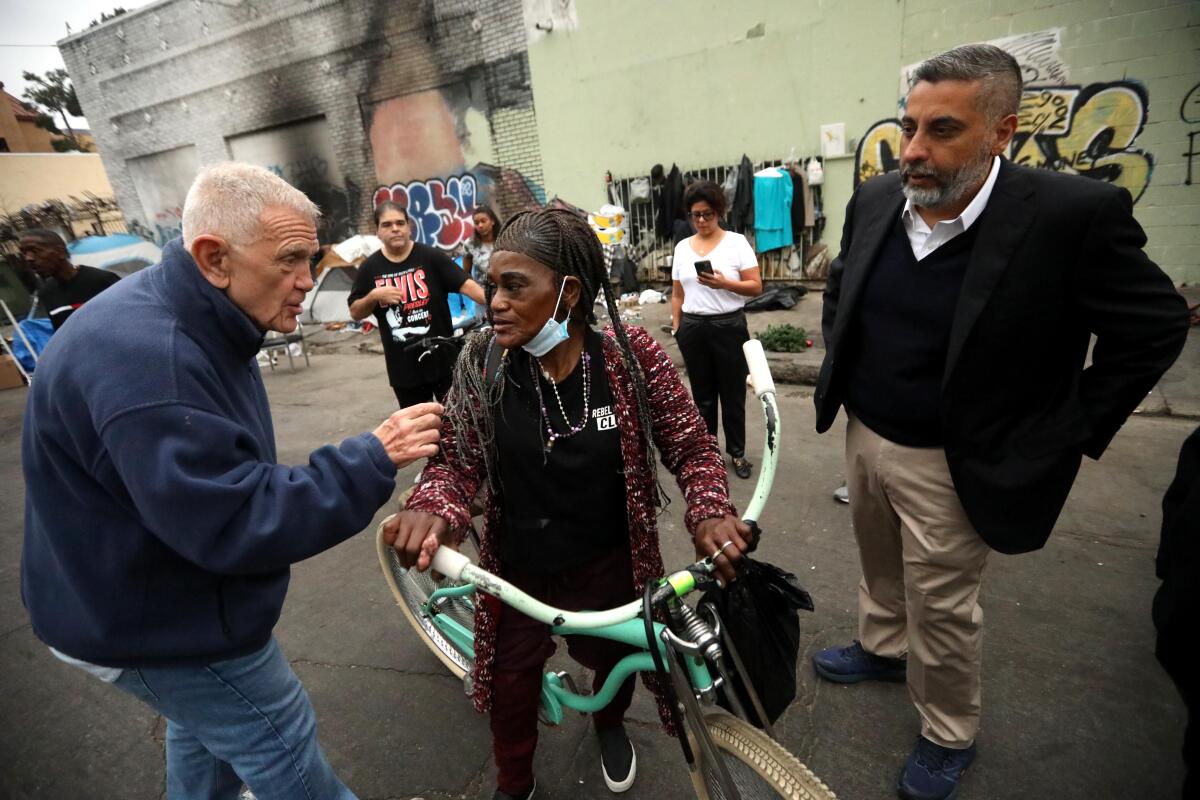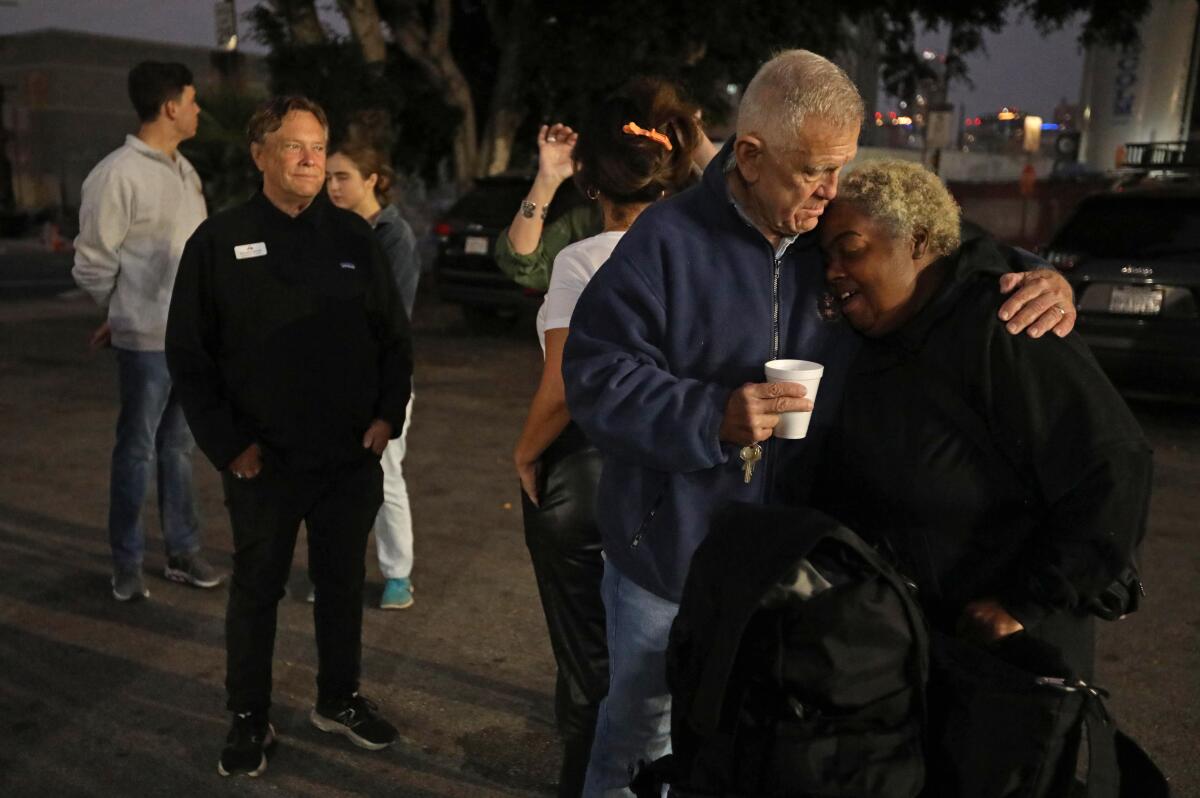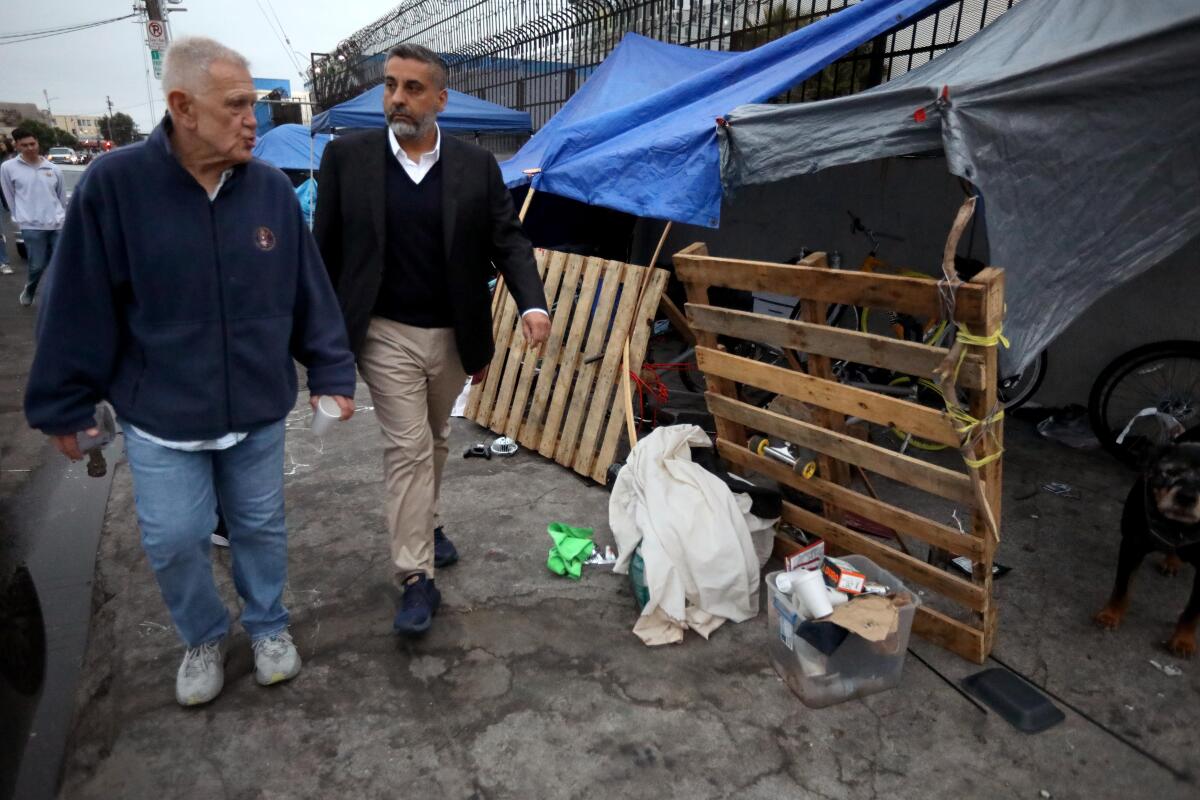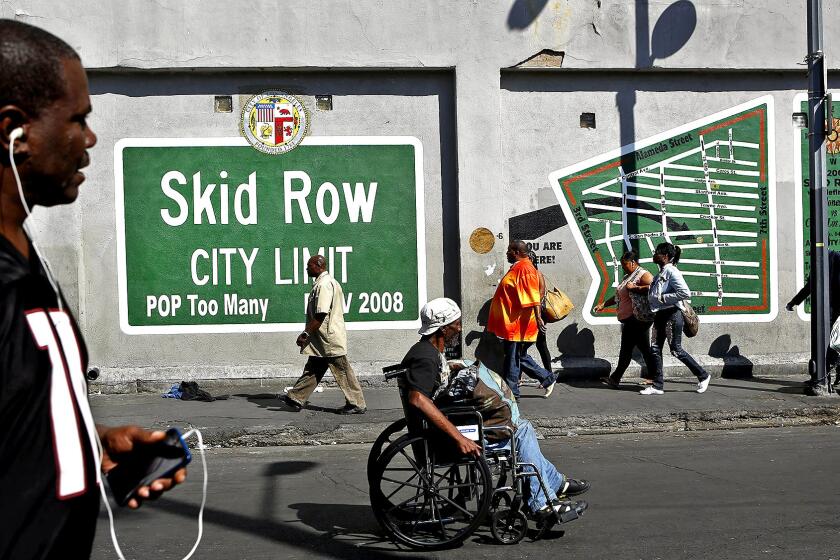A retired federal judge takes a stroll through Skid Row to prepare for his new assignment

- Share via
The walking tour was part tutorial and part tryout — one federal judge passing on to another his knowledge of Skid Row while testing his colleague’s tolerance for its sights and sounds and the daily struggles of its hard-pressed inhabitants.
The day after signing off on a historic settlement that requires Los Angeles County to provide 3,000 new mental-health and substance-use treatment beds and commit hundreds of millions of dollars in services for homeless housing, U.S. District Judge David O. Carter staged a hands-on test of the fellow judge nominated as monitor to ensure those terms are met.
“The monitor must be willing to take to the streets, and learn from the community, not the bureaucracy,” Carter wrote in an admonishment he inserted into the agreement before signing it Thursday.

To put a real-life exclamation point on that demand, Carter invited the proposed monitor, retired U.S. Magistrate Judge Jay C. Gandhi, to walk those streets with him Friday morning.
As daylight broke, the two judges — Carter dressed inconspicuously in a plain sweatshirt and jeans and Gandhi a bit formal for the streets in blue blazer and slacks — led a small procession west from the rendezvous point, Catch 21 Seafood Restaurant at South Central Avenue and 5th Street.
A small procession trailed behind, consisting of two young law clerks, several of Carter’s ambassadors in the community and Michele Martinez, the special master over the portion of the case settled by the city.
Wending his way down streets and sidewalks that were beginning to stir with early risers, or people who hadn’t slept at all, Carter added his own commentary on the unpleasant details of life on Skid Row.
Drug dealers don’t sell out of their tents, he told Gandhi, passing on an insight he said he gained from the late General Jeff Page, who was known as mayor of Skid Row.
“Watch the guy in the cardboard with urine all over it because he’s got $100,000 underneath,” he said. “So there’s a lot of dope that passes through. You still want to do this?”
Along the way, Carter prompted Gandhi to speak with Kevin Call, a voluble man who said he assumed the mantle of mayor of Skid Row following Page’s death in 2021.
Skid row is the place that dares not speak its name.
Call, who says he is on duty every day, was a font of knowledge on Skid Row’s comings and goings and a particularly sharp critic of the help that government agencies provide.
“LAHSA [the Los Angeles Homeless Services Authority], they drive around the streets; they don’t give up much to the people,” he said. “Maybe they got a bag lunch, toothpaste and a soap, but they’re not doing what is necessary for the people.”

There were several stops, first a Homeless Health Care Los Angeles ReFresh Spot where residents can use bathrooms and showers 24 hours a day seven days a week and bring their clothes to be laundered.
Fire Station No. 9 on East 7th Street, Carter told Gandhi, was where he’d learn the real truth about Skid Row. Ringing the doorbell there, Carter summoned the commander, who filled in Gandhi on the scourge of fentanyl.
On one corner, Carter prompted Gandhi to attempt an impossible passage through a phalanx of tents that completely blocked a sidewalk.
Don Garza, a Skid Row resident who has attended hearings in the case, gave Gandhi a wrenching description of the exploitation of women.
“They’re able to have some person trafficked in these tents 24 hours a day seven days a week servicing people and keeping them on drugs,” Garza said. “They keep them high and they keep them drugged up because they take advantage of them.”
Carter noticed a woman he didn’t know standing on the sidewalk muttering to herself. She told him that she had recently arrived from Alaska and had no place to stay. Considering her at high risk, he asked Call and outreach pastor Donald Dermit to find her shelter. After a few calls they said Volunteers of America would take her in. After that she stuck with the group, talking to no one but herself.
On a side street, Carter struck up a conversation with a cheerful woman on a bicycle and urged Gandhi to talk to her.
In response to the judge’s questions, Paula Chatman said she had a dog named Pretty and had once obtained a Section 8 voucher but nothing came of it.
“Can the first step be that we get you and your precious little Pretty into a place like a women’s shelter?” he asked.
“I can’t do a women’s shelter,” she said. “I need to be alone.”
Carter said his goal was to keep coming back until Gandhi has talked to hundreds of people like Chatman.

“In the future when it’s raining we’re going to be down here,” he said. “We’re going to be down here at times that nobody suspects, so you really see it.”
Asked if he was ready for the job, Gandhi gave a nuanced answer.
“I think it will take a little time,” he said.
After two hours, the procession made its way back to Catch 21 for breakfast. Carter took out his credit card to pay the bill.
A Volunteers of America van came to pick up the woman from Alaska, but she wouldn’t get in and went her way.
More to Read
Sign up for Essential California
The most important California stories and recommendations in your inbox every morning.
You may occasionally receive promotional content from the Los Angeles Times.















